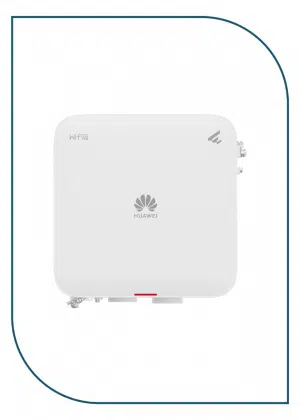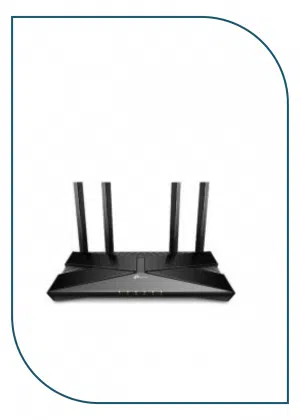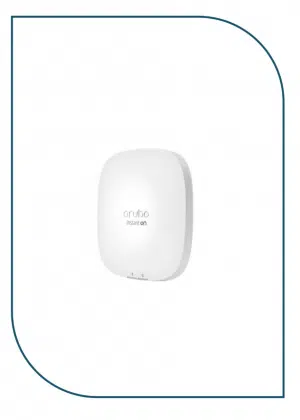Description
AP761
AP761 Specifications
The AP761 is designed to transmit Wi-Fi 6 wireless networks, supporting IEEE 802.11 b/g/n/ax protocols in the 2.4 GHz band and IEEE 802.11 a/n/ac/ax protocols in the 5 GHz band
| Huawei AP761 | |
| Technical specifications | |
|---|---|
| Dimensions (H x W x D) | 69 x 200 x 200 mm |
| Weight | 1,91 kg |
| Ports | 1 x 10M/100M/GE electrical port
1 x SFP optical port(The GE electrical port supports PoE-In) |
| Bluetooth | BLE 5.2 |
| LED indicator | Indicate the power-on, startup, running, alarm, and fault states
of the system |
| Power supply specifications | |
| Power input | PoE power supply: in compliance with IEEE 802.3at/af(When working in 802.3af power supply mode, the AP is restricted in
functions) |
| Maximum power consumption | 17,7 W |
| Environmental specifications | |
| Operating temperature | –40°C to +65°C |
| Storage temperature | –40°C to +85°C |
| Operating humidity | 0%-100% |
| IP rating | IP68 |
| Radio specifications | |
| Antenna type | Built-in directional antennas The horizontal and vertical beam widths of 2.4 GHz antennas are 65° and
40°, respectively. The horizontal and vertical beam widths of 5 GHz antennas are 65° and 20°, respectively. |
| Antenna gain | 2,4 GHz: 10 dBi5 GHz: 11 dBi
BLE: 5 dBi |
| Maximum quantity of SSIDs
on each radio |
≤ 16 |
| Maximum number of STAs | ≤ 1024 (512/radio) |
| Maximum transmit power | 2,4 GHz: 28 dBm5 GHz: 27 dBm |
| Power adjustment increment | 1 dBm |
| Maximum number of nonoverlapping channels | 2.4 GHz (2.412 GHz – 2.472 GHz)802.11 b/g
802.11 n
802.11 ax
5 GHz (5.18 GHz – 5.825 GHz) 802.11 a
802.11 n
802.11 ac
802.11 ax
|
| Fat/Fit AP mode | |
| WLAN features | Compliance with IEEE 802.11ax and compatibility with IEEE 802.11a/b/g/n/ac/ac Wave 2
Maximum ratio combining (MRC) Space time block code (STBC) Cyclic delay diversity (CDD)/Cyclic shift diversity (CSD) Beamforming Multi-user multiple-input multiple-output (MU-MIMO) Orthogonal frequency division multiple access (OFDMA) Compliance with 1024-QAM and compatibility with 256-QAM/64-QAM/16-QAM/8-QAM/QPSK/BPSK Target wake time (TWT) Low-density parity-check (LDPC) Frame aggregation, including A-MPDU (Tx/Rx) and A-MSDU (Tx/Rx) 802.11 dynamic frequency selection (DFS) Short GI in 20 MHz, 40 MHz, and 80 MHz modes Priority mapping and scheduling that are compliant with Wi-Fi multimedia (WMM) to implement priority-based data processing and forwarding; automatic and manual rate adjustment (the rate is adjusted automatically by default) WLAN channel management and channel rate adjustment Automatic channel scanning and interference avoidance Separate service set identifier (SSID) hiding configuration for each AP, supporting Chinese SSIDs Signal sustain technology (SST) Unscheduled automatic power save delivery (U-APSD) Control and provisioning of wireless access points (CAPWAP) in Fit AP mode Extended service set (ESS) in Fit AP mode Advanced cellular coexistence (ACC), minimizing the impact of interference from cellular networks Multi-user CAC 802.11k and 802.11v smart roaming 802.11r fast roaming (≤ 50 ms) |
| Network features | Compliance with IEEE 802.3ab
Auto-negotiation of the rate and duplex mode and automatic switchover between the Media Dependent Interface (MDI) and Media Dependent Interface Crossover (MDI-X) Compliance with IEEE 802.1Q VLAN assignment by SSID VLAN trunk on uplink Ethernet ports Management channel of the AP’s uplink port in tagged or untagged mode DHCP client, obtaining IP addresses through DHCP Application identification and QoS classification on the AP in local forwarding (direct forwarding) mode for better voice quality (identifiable common applications in the industry: Skype, QQ, and WeChat) STA isolation in the same VLAN IPv4/IPv6 access control list (ACL) Link layer discovery protocol (LLDP) Uninterrupted service forwarding upon CAPWAP tunnel disconnection in Fit AP mode Unified authentication on the WAC in Fit AP mode WAC dual-link backup in Fit AP mode Network address translation (NAT) in Fat AP mode IPv6 in Fit AP mode Telemetry in Fit AP mode, quickly collecting AP status and application experience parameters Soft generic routing encapsulation (GRE) IPv6 source address validation improvements (SAVI) Multicast Domain Name Service (mDNS) gateway protocol |
| QoS features | Priority mapping and scheduling that are compliant with Wi-Fi multimedia (WMM) to implement priority-based data processing and forwarding
WMM parameter management for each radio WMM power saving Priority mapping for uplink packets; flow-based mapping for downlink packets Queue mapping and scheduling User-based bandwidth limiting Adaptive bandwidth management (automatic bandwidth adjustment based on the user quantity and radio environment) for user experience improvement Airtime scheduling Air interface HQoS scheduling Intelligent multimedia scheduling algorithm |
| Security features | Open system authentication
WEP authentication/encryption using a 64-bit, 128-bit, 152-bit, or 192-bit encryption key WPA2-PSK authentication and encryption (WPA2-Personal) WPA2-802.1X authentication and encryption (WPA2-Enterprise) WPA3-SAE authentication and encryption (WPA3-Personal) WPA3-802.1X authentication and encryption (WPA3-Personal) WPA-WPA2 hybrid authentication WPA2-WPA3 hybrid authentication WPA2-PPSK authentication and encryption in Fit AP mode WAPI authentication and encryption WIDS/WIPS, including rogue device detection and containment, attack detection and dynamic blacklist, and STA/AP blacklist and whitelist 802.1X authentication, MAC address authentication, Portal authentication, etc. DHCP snooping Dynamic ARP inspection (DAI) IP Source Guard (IPSG) 802.11w Protected Management Frames (PMF) IPsec/DTLS encryption |
| Maintenance features | Unified management and maintenance on the WAC in Fit AP mode
Automatic login, automatic configuration loading, and plug-and-play (PnP) in Fit AP mode Automatic batch upgrade in Fit AP mode Telnet STelnet using SSHv2 SFTP using SSHv2 Remote wireless O&M through Bluetooth console ports Web system-based AP management and login through HTTP or HTTPS in Fat AP mode Real-time configuration monitoring and fast fault locating using the NMS SNMPv1/v2/v3 in Fat AP mode System status alarm Network Time Protocol (NTP) in Fat AP mode |
| BYOD | Device type identification according to the organizationally unique identifier (OUI) in the MAC address
Device type identification based on the user agent (UA) information in an HTTP packet Device type identification based on DHCP options The RADIUS server delivers packet forwarding, security, and QoS policies according to the device type carried in the RADIUS authentication and accounting packets.(The AP supports BYOD only in Fit AP mode) |
| Spectrum analysis | Identification of multiple interference sources including Bluetooth devices, microwave ovens, cordless phones, ZigBee devices, game controllers, 2.4 GHz/5 GHz wireless video and audio devices, and baby monitors
Working with a location server to locate interference sources and perform spectrum analysis on them(The AP supports spectrum analysis only in Fit AP mode) |
| Cloud mode | |
| WLAN features | Compliance with IEEE 802.11a/b/g/n/ac/ac Wave 2/ax
Maximum ratio combining (MRC) Space time block code (STBC) Cyclic delay diversity (CDD)/Cyclic shift diversity (CSD) Beamforming Multi-user multiple-input multiple-output (MU-MIMO) Orthogonal frequency division multiple access (OFDMA) Compliance with 1024-QAM and compatibility with 256-QAM/64-QAM/16-QAM/8-QAM/QPSK/BPSK Target wake time (TWT) Low-density parity-check (LDPC) Frame aggregation, including A-MPDU (Tx/Rx) and A-MSDU (Tx/Rx) 802.11 dynamic frequency selection (DFS) Short GI in 20 MHz, 40 MHz, and 80 MHz modes Priority mapping and scheduling that are compliant with Wi-Fi multimedia (WMM) to implement priority-based data processing and forwarding WLAN channel management and channel rate adjustment Automatic channel scanning and interference avoidance Separate service set identifier (SSID) hiding configuration for each AP Signal sustain technology (SST) Unscheduled automatic power save delivery (U-APSD) |
| Network features | Compliance with IEEE 802.3ab
Auto-negotiation of the rate and duplex mode and automatic switchover between the Media Dependent Interface (MDI) and Media Dependent Interface Crossover (MDI-X) Compliance with IEEE 802.1Q VLAN assignment by SSID DHCP client, obtaining IP addresses through DHCP STA isolation in the same VLAN Access control list (ACL) Unified authentication on the cloud management platform NAT Telemetry in Fit AP mode, quickly collecting AP status and application experience parameters |
| QoS features | Priority mapping and scheduling that are compliant with Wi-Fi multimedia (WMM) to implement priority-based data processing and forwarding
WMM parameter management for each radio WMM power saving Priority mapping for uplink packets; flow-based mapping for downlink packets Queue mapping and scheduling User-based bandwidth limiting Airtime scheduling Air interface HQoS scheduling |
| Security features | Open system authentication
WEP authentication/encryption using a 64-bit, 128-bit, 152-bit or 192-bit encryption key WPA2-PSK authentication and encryption (WPA2-Personal) WPA2-802.1X authentication and encryption (WPA2-Enterprise) WPA3-SAE authentication and encryption (WPA3-Personal) WPA3-802.1X authentication and encryption (WPA3-Enterprise) WPA-WPA2 hybrid authentication WPA2-WPA3 hybrid authentication 802.1X authentication, MAC address authentication, Portal authentication, etc. DHCP snooping Dynamic ARP inspection (DAI) IP Source Guard (IPSG) |
| Maintenance features | Unified management and maintenance on the cloud management platform
Automatic login, automatic configuration loading, and plug-and-play (PnP) Batch upgrade Telnet STelnet using SSHv2 SFTP using SSHv2 Remote wireless O&M through Bluetooth console ports Web-based NMS, and login through HTTP or HTTPS Real-time configuration monitoring and fast fault locating using the NMS System status alarm NTP |
Wi-Fi 6 AX1800 wireless network, Bluetooth
The AP761 is designed to transmit Wi-Fi 6 wireless networks, supporting IEEE 802.11 b/g/n/ax protocols in the 2.4 GHz band and IEEE 802.11 a/n/ac/ax protocols in the 5 GHz band. Its maximum theoretical throughput is 574 Mb/s in the 2.4 GHz band and 1201 Mb/s in the 5 GHz band.
This speed is more than sufficient for most internet activities, including streaming 4K videos online, gaming, or downloading large files.
The access point also utilizes several additional features that positively impact network quality. MU-MIMO allows simultaneous transmission and reception of data from multiple clients, eliminating data queuing. Beamforming shapes the beam to improve connection with devices at the edge of the coverage area, while TWT (Target Wake Time) conserves energy by waking connected devices only when a transmission is initiated.
Additionally, the device supports Bluetooth transmission (BLE 5.2), which you can utilize for remote management, localization, or IoT applications, among others.

AP761

AP761
Gigabit Ethernet port, SFP slot, Power over Ethernet
The offered product is equipped with 1 gigabit Ethernet port (10/100/1000 Mb/s) and 1 SFP slot. The Ethernet port serves as the input for IEEE 802.3 af/at PoE power – this is the only method of power supply. The manufacturer suggests using 802.3at; with 802.3af, some functions may be limited. The maximum power consumption is 17.7 W.
The SFP slot allows for transmission using a fiber optic cable. This is particularly important if you’re using the AP761 in a location distant from the rest of the network segments or in a network where devices are dispersed.
Directional antennas
The access point features directional antennas. In the 2.4 GHz band, the gain is 10 dBi, with a main beam width of 65° horizontally and 40° vertically. In the 5 GHz band, the gain is 11 dBi, with a main beam width of 65° horizontally and 20° vertically. Thanks to the use of these antennas, the AP761 stands out from the competition with excellent coverage. It is capable of covering a much larger area with Wi-Fi signal compared to devices using omnidirectional antennas. This is particularly important in open spaces, for which it is designed.
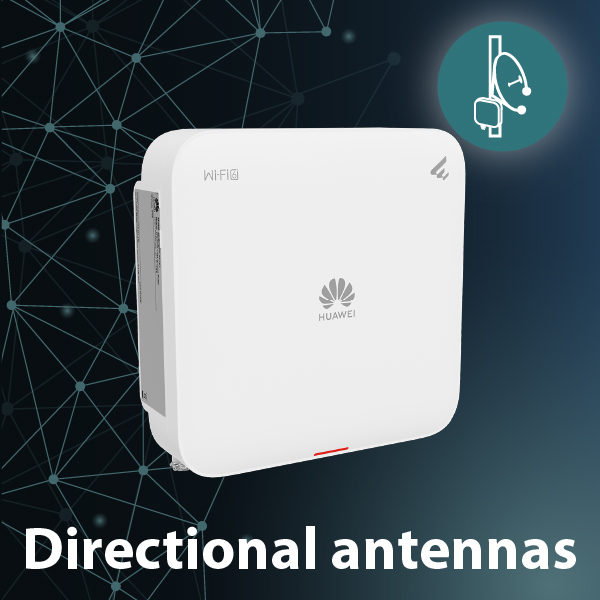
AP761

AP761
Waterproof enclosure
The device is fully designed for outdoor use. Its enclosure protects the interior from moisture and dust ingress, with an IP68 protection rating. The access point is adapted for wall or pole mounting. An additional advantage is the 6 kA surge protection, essential for using the device outdoors.
Up to 1024 clients
The Huawei AP761 can support a maximum of 1024 clients (512 per radio) connected simultaneously. It performs excellently in locations where there may potentially be many users. The system supports load balancing and smart roaming, ensuring that if one access point becomes overloaded, users are switched to others.
The DFA (Dynamic Frequency Allocation) algorithm is used for automatically detecting wireless channel usage and identifying overlapping transmissions. In the case of multiple access points, they operate in a way to avoid interfering with each other. Additionally, technologies such as EDCA (Enhanced Distributed Channel Access) and airtime scheduling allow for planning the schedule of channel utilization by specific client devices, ensuring equal access to the network for each of them.
A significant advantage of the system based on eKitEngine APs is the optimization of network utilization by client devices. Clients with low signal strength or low connection speed are automatically disconnected to improve overall transmission quality. Additionally, the AP761 features a 5G-prior function – client devices are primarily connected in the 5 GHz band to provide them with the best possible throughput. This significantly reduces the load and interference in the 2.4 GHz band.
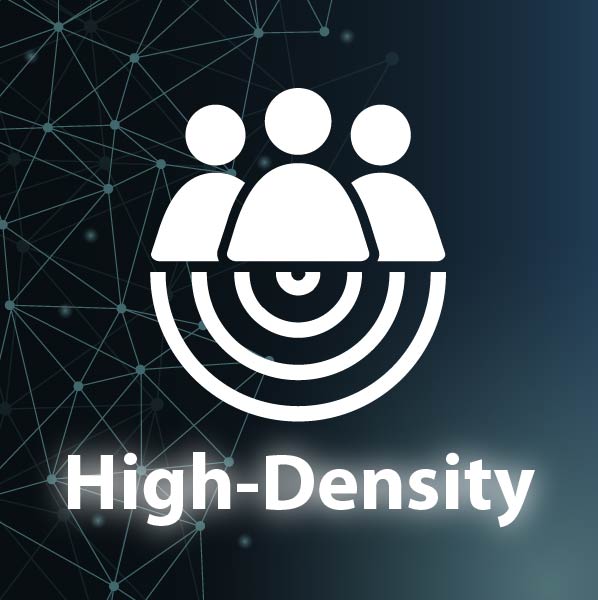
AP761
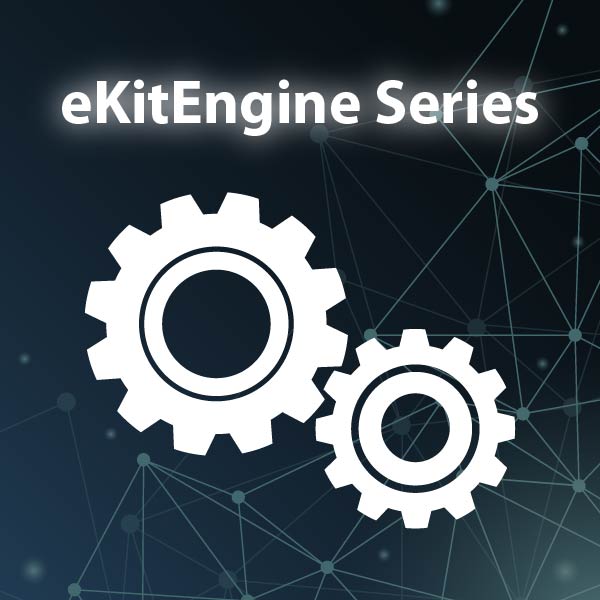
AP761
Advanced wireless system
The offered product is designed to work in a large wireless system composed of multiple access points. Such a network is capable of covering even very large areas, depending on the number of devices used. The system supports data roaming, where users are automatically switched between individual access points without losing their connection.
Huawei solutions offer a wide range of features related to bandwidth control, improving transmission quality, and security. For user authentication, you can utilize methods such as 802.1x, MAC addresses, or captive portals. An advanced management and monitoring system will help you reduce the time spent on network administration, for example, through automatic detection and recognition of various types of errors.
Four operating modes
Access points can operate in four modes:
- Fat AP – the access point operates independently, and configuring and managing it resembles the process for standard wireless routers. It’s suitable for small networks where you use only one AP.
- Leader AP – It allows configuring the device as a “leader,” thereby taking on the role of a controller in the network. You can connect other access points to the device in Leader AP mode to create an expanded system. This mode is best suited for small networks, such as offices or restaurants, and helps reduce costs associated with purchasing additional controllers.
- Cloud AP – in this mode, the access point can be managed from a cloud-based platform. This platform significantly simplifies monitoring and conducting initial configurations, eliminating the need for additional management devices.
- Fit AP – this is the basic mode of operation in which the access point connects to a controller.
AP761

AP761
Multiple uses
The Huawei AP761 finds its application in many networks where there is a need to distribute the signal outdoors. These include hotels, restaurants, pools, or parks. Thanks to its directional antennas, it provides excellent coverage, capable of reaching a large area. Its durable, waterproof enclosure also makes the AP761 suitable for indoor use, especially in demanding locations. You can successfully deploy it in various types of production halls or warehouses where the access point is exposed to dust.










